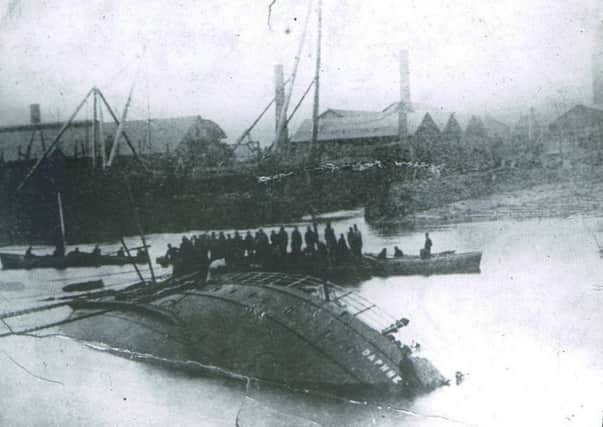On this day 1883: 126 dead in Clyde sinking of SS Daphne


Scotland’s shipbuilding industry faced its worst tragedy when the steamer, SS Daphne, capsized on its launch from Alex Stephen and Sons.
A total of 126 men lost their lives with 40 women widowed and 150 children left without their main breadwinners as a result of the catastrophe.
Advertisement
Hide AdAdvertisement
Hide AdAmong those who died were a number of teenage boys setting out in the world of work.
Such was the public reaction to the tragedy, relief funds were set up across the country to cover living costs and education of the youngsters left without their father.
“The catastrophe was as sudden as it was unexpected and has proved to be unspeakable sad in results,” a report in the Glasgow Herald, printed the day after the sinking, said.
The 500 tonne vessel went down moments after it was launched, with around 200 workmen on board.
Advertisement
Hide AdAdvertisement
Hide AdThey had remained on board with the vessel due to travel to a large crane on the river, where the fit out would be completed.
Families of the shipyard workers had gathered to watch the launch on the river bank but were left momentarily “paralysed by horror” as the ship toppled over with their loved ones on board.
The speed at which the boat entered the water struck several of spectators on the day.
“She... quivered for what appeared a moment or two, as if in an effort to right herself, then toppled over on her beam ends and disappeared into the dark and rapidly flowing tide, carrying with her to an untimely end a fearful holocaust of hapless victims,” the report said.
Advertisement
Hide AdAdvertisement
Hide AdA number of men leapt onto the water while others clung to the starboard side of the steamer.
“But the majority went over with the ship, such being precipitated for a considerable distance along the surface of the water, while many more were dragged into the vortex and disappeared,” the newspaper said,
Spectators rushed to pull men from the water with an estimated 50 managing to swim to shore.
After the disaster, Alexander Crammond, a joiner who had survived the sinking, told The Scotsman:
Advertisement
Hide AdAdvertisement
Hide Ad“I noticed she moved very quickly, more quickly than is usually the case.”
Crammond was rescued by a tugboat, standing on the sinking ship up to his waist in water.
Among the dead were three 14-year-olds: snipper boy George McGee; apprentice plumber James Douglas Stephen and rivet boy John Laden, as well as four 15-year-olds: Rivet boys Daniel Dillon and Patrick Farrel; apprentice plumber Alexander McGregor and apprentice joiner John McDonald.
An inquiry following the disaster found the shipyard owners blameless, leading some to claim a cover-up.
Advertisement
Hide AdAdvertisement
Hide AdThe cause of the sinking was reported as poor initial stability combined with too much loose gear and too many people on board.
Following the tragedy, the number of people on board at the time of a ship’s launch was limited to those required to moor the vessel.
The Daphne had been due to serve tourist routes to Ireland with a rush to complete the steamer ahead of the Glasgow fair.
Following the disaster, she was salvaged and refitted as the SS Rose.
Advertisement
Hide AdAdvertisement
Hide AdThe steamer’s launch was not anticipated to have been of huge significance, according to reports.
But the events of July 3, 1883 formed “the first disaster which was has ever occurred in the history of this important industry,” a newspaper said.
